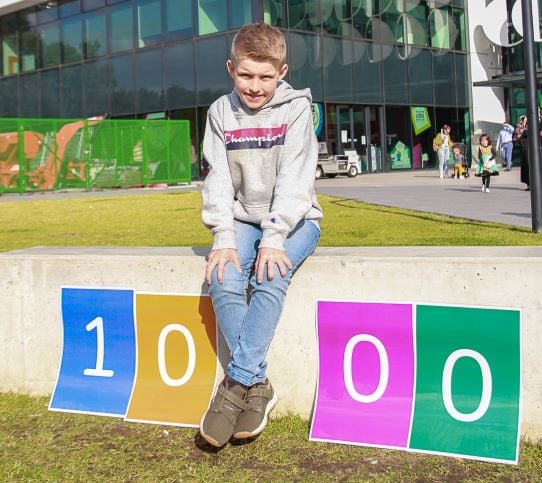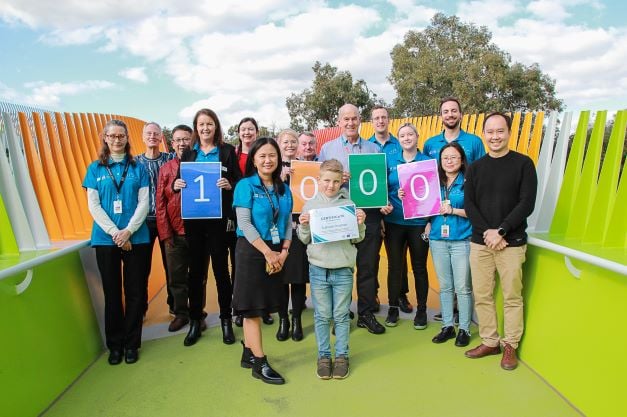
The MAVRIC (Mechanisms of Acute Viral Respiratory Infection in Children) study recently celebrated the recruitment of the 1000th participant to the study, eight-year-old Sullivan Strahan.
To mark this significant milestone, Sullivan and his mum Shannon Herd were invited to The Kids Research Institute Australia to enjoy a ‘1000’ themed afternoon tea with Wal-yan Respiratory Research Centre team members involved in the study.
Respiratory illnesses, particularly wheezing and asthma, are one of the most common reasons children present to hospital emergency departments each year.
The MAVRIC study, which has been ongoing for 20 years, is designed to discover why some children are more susceptible to getting severe respiratory illnesses when they have a viral infection.
The study comprises children who presented with acute lower respiratory symptoms such as wheezing and asthma, to the Emergency Department of Princess Margaret Hospital for Children and, now, Perth Children's Hospital.
The study was the first to discover that a newly recognised species of rhinovirus (the common ‘cold’ virus) is the most common cause of children presenting to hospital with acute wheezing and asthma. Our present research is aimed at uncovering why this new virus is such a serious worldwide problem in young children.
Professor Peter Le Souef said the ongoing study also continues to try to better understand and predict why particular children keep returning to hospital with respiratory exacerbations, and to develop new treatments which reduce the likelihood of them developing asthma.
“We have identified susceptibility factors (biomarkers) to acute wheezing attacks in the MAVRIC children and are working to demonstrate if these biomarkers consistently identify high-risk children, particularly in early life before children develop asthma,” Professor Le Souef said.
“This work has led to a clinical trial called POWER, which aims to boost immune system responses to virus infection by giving a powder containing a harmless mixture of dead bacteria.
We expect this medication will work by tricking the immune system into thinking it’s being attacked so it will provide a better defence against virus infections and therefore reduce wheezing attacks in children, perhaps also preventing them.
These projects are expected to benefit the 5.1 asthmatic children in Australia alone.
The MAVRIC research study team would especially like to thank the participants and families who have made the study possible, and congratulate them for being part of such a world-leading study. This includes the support of healthy children and families who have also participated in this research.
The MAVRIC study has involved a huge team effort, with over 50 researchers contributing to the study. Congratulations also to the team.
Together, they are contributing to the Wal-yan Respiratory Research Centre’s vision to ensure that all children have health lungs for life.
The Wal-yan Respiratory Research Centre is a powerhouse partnership between The Kids Research Institute Australia, Perth Children’s Hospital Foundation and Perth Children’s Hospital.

Pictured left to right are Michelle Schwager, Professor Jack Goldblatt (retired), Associate Professor Brad Zhang, Associate Professor Ingrid Laing, Laura Coleman, Dr Franciska Prastanti, Dr Joelene Bizzintino, Professor Wayne Thomas, Sullivan Strahan, Professor Peter Le Souef, Dr David Hancock, Rebecca WaThe Kidsnson, Kim Khoo, Dr Thomas Iosifidis and Dr Kevin Looi.
